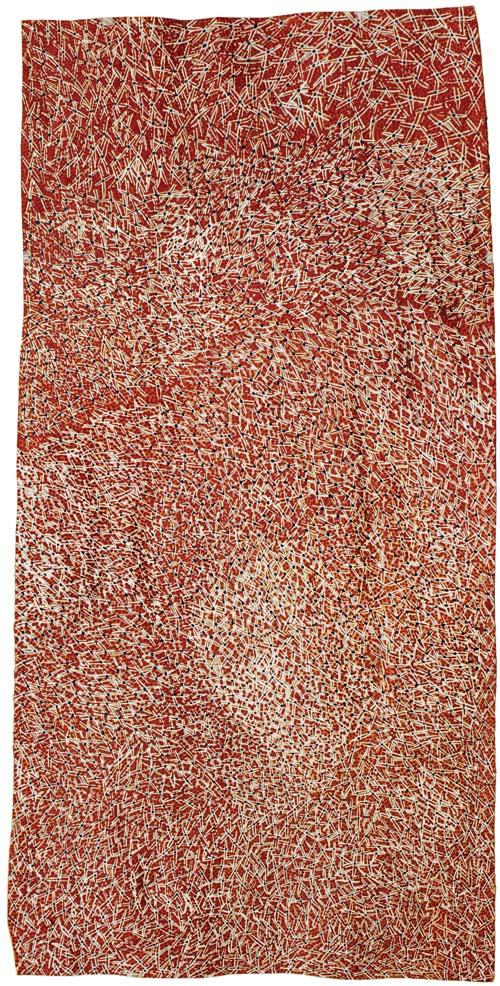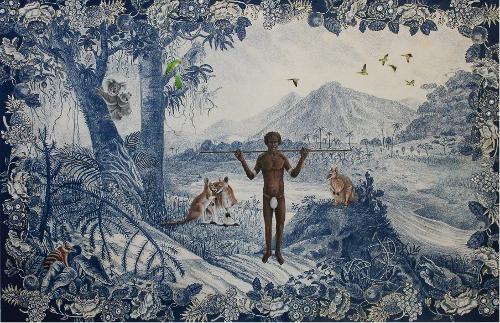
Synergistically with the artist's own life and career, the exhibition Louise Bourgeois: Late Works shown recently at Heide Museum of Modern Art materialises powerful objects. Bourgeois’ oeuvre, which spans more than 70 years, originates within her uncanny ability to elicit human subjectivity through abstracted and embodied works that communicate directly to their audience.
For this reason, Bourgeois’ work has held a strong and enduring impact on Australian artists and audiences. Largely due to the persistence, thankfully, of curator Jason Smith, Melbourne audiences have been privileged to see two major exhibitions of her work. In 1995 early and mature works were shown at the NGV. In contrast, this second incarnation at Heide focusses on the last fifteen years of her life and work, with a particular emphasis on textiles.
Patches, seams, needles and threads are actively present throughout the exhibition, almost as remnants of the artist herself. We know that many of the textiles used in these works have come from materials she collected or clothes she once wore and had stashed away up in her attic. This personal genealogy testifies to Bourgeois’ individualised work ethic, which embeds many of her pieces with a highly charged presence. Seams and their repair are skilfully used as metaphors for pain, complexity, repetition and healing. Informed by abstraction and psychoanalysis, Bourgeois sought to uncover and confront wounds of the past through subtle yet powerful means, generating a kind of optimism through repair.
A large number of the works in this exhibition focus on figuration. Headless torsos and body-less heads create disturbing yet strangely alluring forms. Caged, in vitrines, on plinths or suspended, works such as Single I (1996) continue Bourgeois’ lifelong interest in expressing the intensity of personal emotions and conflict. Their confluence with the textile and handsewn elements brings to the fore the spectre of touch and the realm of the domestic. For many female artists, Bourgeois emits a bright flare, validating personal experience and family relations as subject matter and formal concerns. At times, the primacy of the figure is abstracted into standing columns in works such as Untitled (2001). Complementing the three-dimensional objects, a series of two-dimensional silk works Dawn (2006) harmonises with the solid physicality of the sculptures. Web-like patterns, resembling more a suite of poetic landscapes, explore subtle colour arrangements and decorative patterns with a delicate intensity.
Ostensibly dominating the entire show, yet masterfully hushed by darkened walls and dim lighting, is one of Bourgeois’ major works Spider (1997). Her trademark cells and spiders combine in this piece to create an immersive and mysterious work, powerful in its size and presence. Drawing on the artist’s childhood experience of working in her parents’ tapestry repair business, tapestry remnants become relics. Seductive glass balls enact an alchemical mystery while suspended talismans evoke protection from an unspecified threat, perhaps the cold steel arachnid looming above.
Alongside this exhibition, Heide has cleverly contextualised Bourgeois’ work and local influence with the companion exhibition Louise Bourgeois and Australian Artists, carefully curated by Linda Michael. This tandem showing of contemporary works by Australian artists who have been inspired and informed by Bourgeois’ work, reveals some of the trajectories of current feminist thinking, as well as the enduringly private nature of art-making.
But for me, the highlight of the show is Blue Days (1996). One of the works employing Bourgeois’ own clothing, seven shirts and dresses eloquently hang and move in a spiral formation. Embellished by a single, shining, red orb, the physical presence of the artist herself is tangible. At the risk of seeming sentimental, I am prompted to picture Bourgeois herself fossicking through a long-forgotten chest, handling the materials, re-interpreting her past to create something optimistically new. Her skill in teasing out a range of human forces emerges in a continual open-ness, providing direct communication to others so palpably present in the Heide galleries, that perhaps she lingers still.












